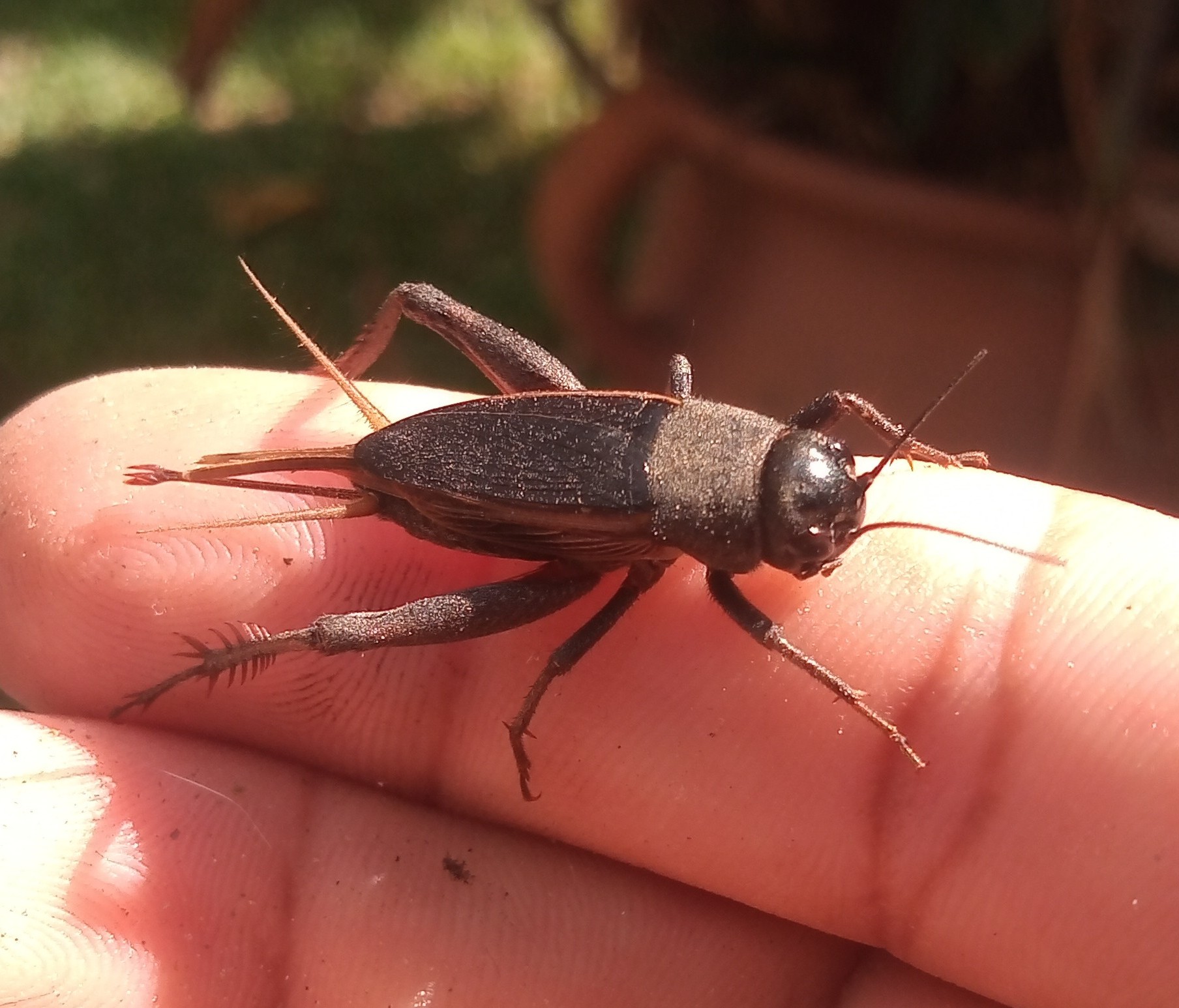
Saludos mis queridos amigos de #insectosfascinantes, en este día quiero compartir con todos ustedes las imágenes de este simpático grillo que pude encontrar en la entrada de mi casa. Justo cuando iba a entrar pude escuchar un chirrido muy agudo que al acercarme dejó de sonar y cuando logré visualizar en el piso noté que estaba este pequeño insecto cerca de una pequeña grieta en la que no podía entrar. Conseguí cogerlo con la mano y se quedó quieto, busqué mi móvil para hacer unas fotos y enseñárselas.
Es un (Gryllus veletis) o Grillo de Campo. Esta especie es una de las más comunes en el continente americano, encontrándose comúnmente en América del Norte y del Sur. Este insecto llega a medir unos 22,0 milímetros (0,87 pulgadas); sin embargo, la hembra suele ser un poco más pequeña (14 milímetros) un equivalente a 0,55 pulgadas, se diferencia del macho por su color marrón oscuro, tanto en su cuerpo rojizo como en su ovipositor marrón oscuro. El Gryllus Vetis se alimenta de plantas vivas y en descomposición, insectos muertos o vivos. Sus principales depredadores son: los sapos, los pavos salvajes y los halcones, entre otros. Esta especie de insecto puede generar sonidos que le permiten detectar otras especies de grillos y también puede atraer a sus parejas. Después del apareamiento, la hembra logra inyectar los huevos en el suelo con su ovipositor y estos tardarán aproximadamente de junio a septiembre en madurar. Estos grillos de campo son muy favorables en el bosque, ya que su presencia disminuye la cantidad de hojas caídas de los árboles, siendo éstas un rico alimento no sólo para los grillos, sino también para las lombrices de tierra así como para los escarabajos.
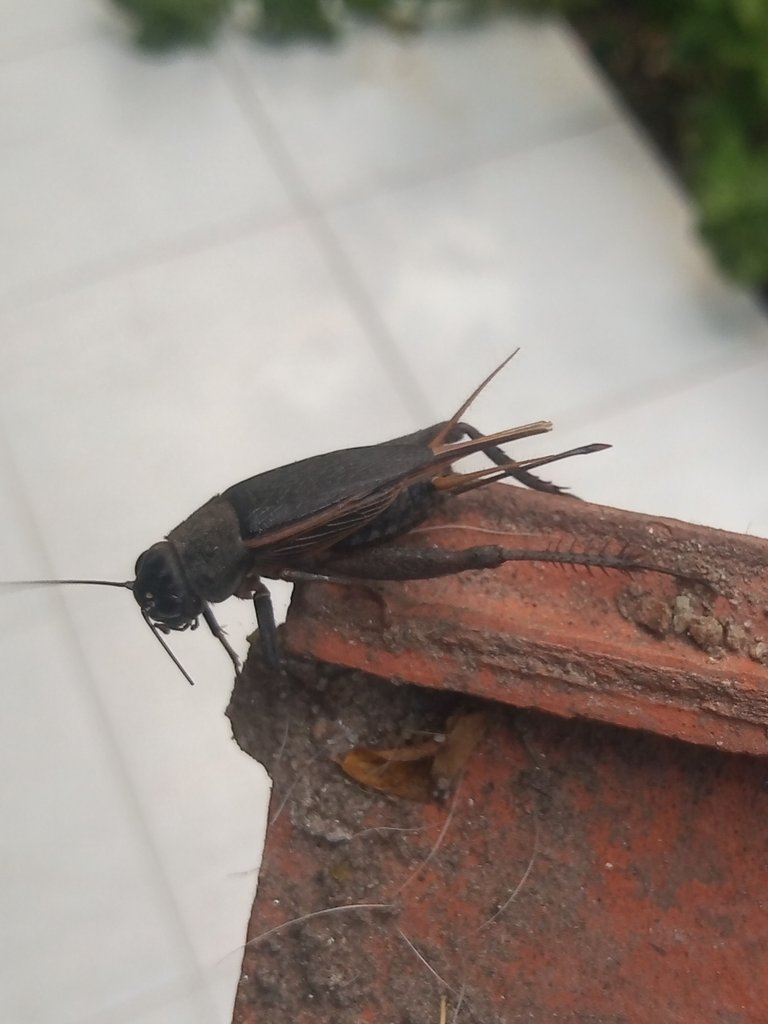
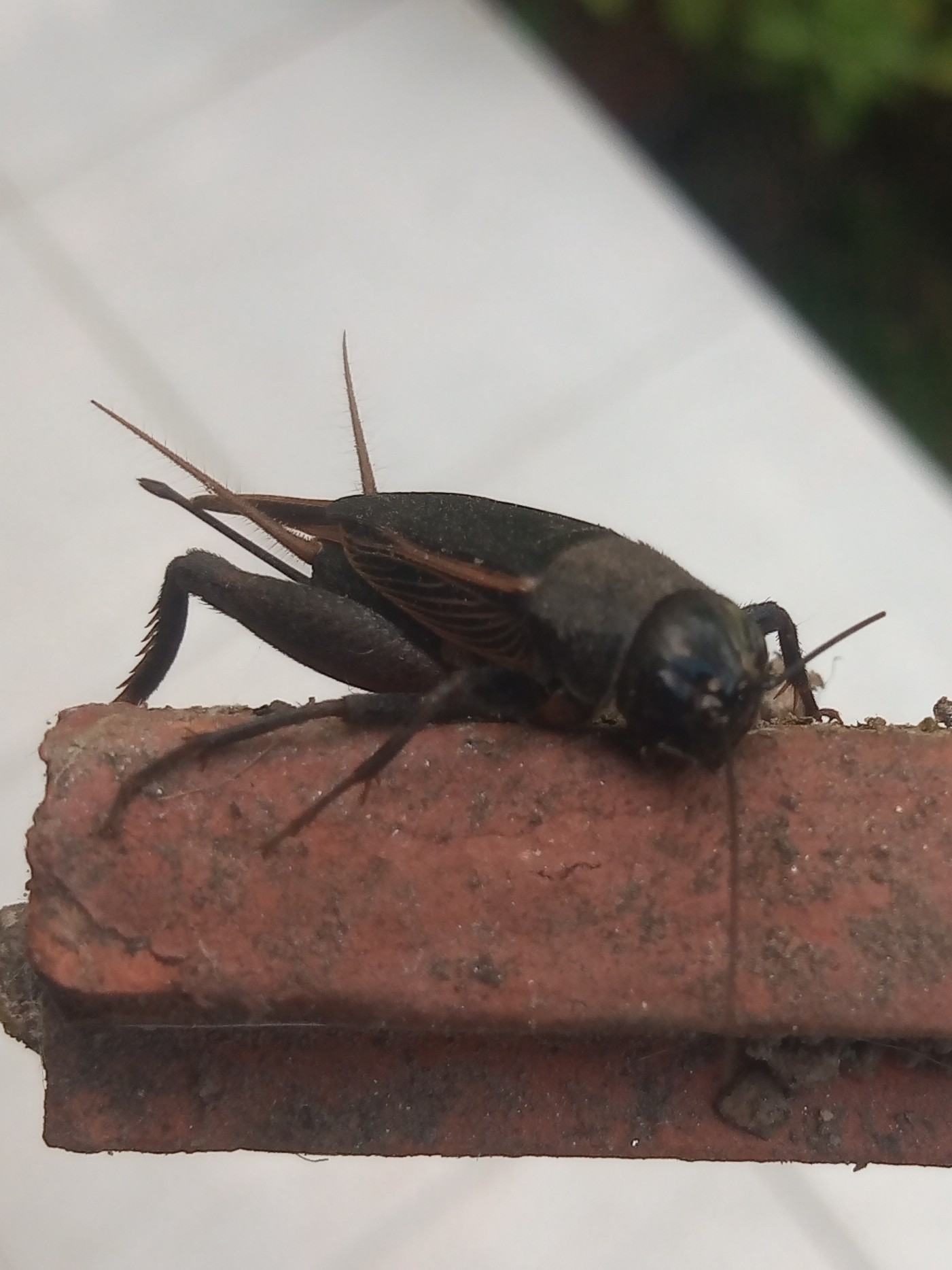
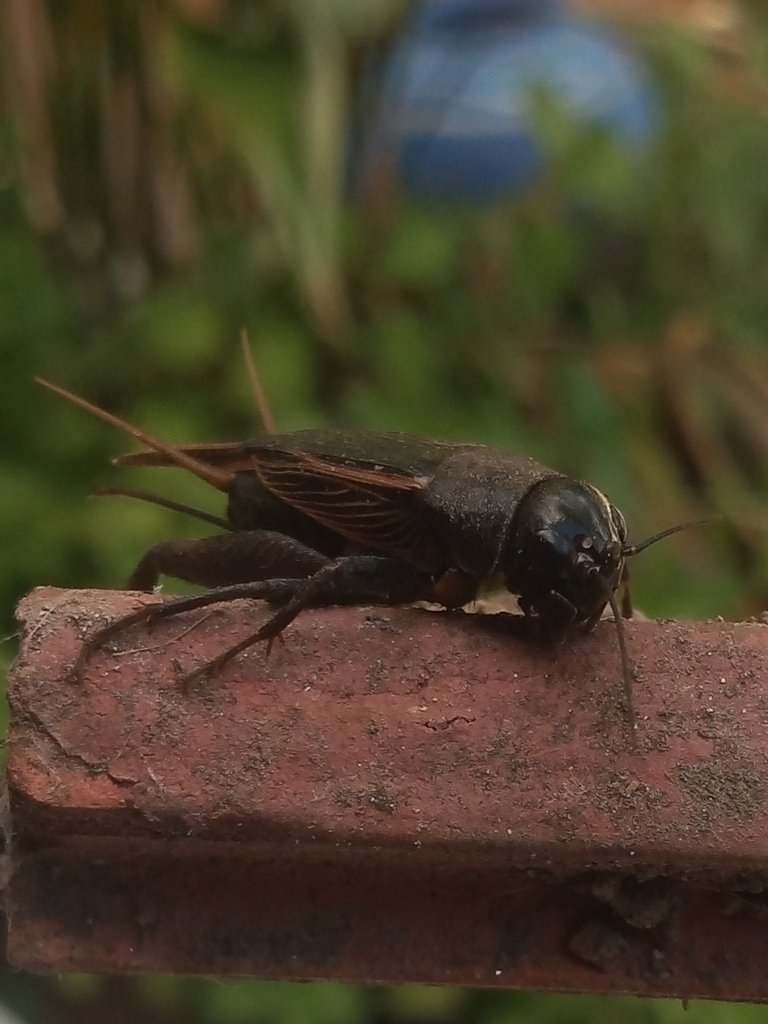
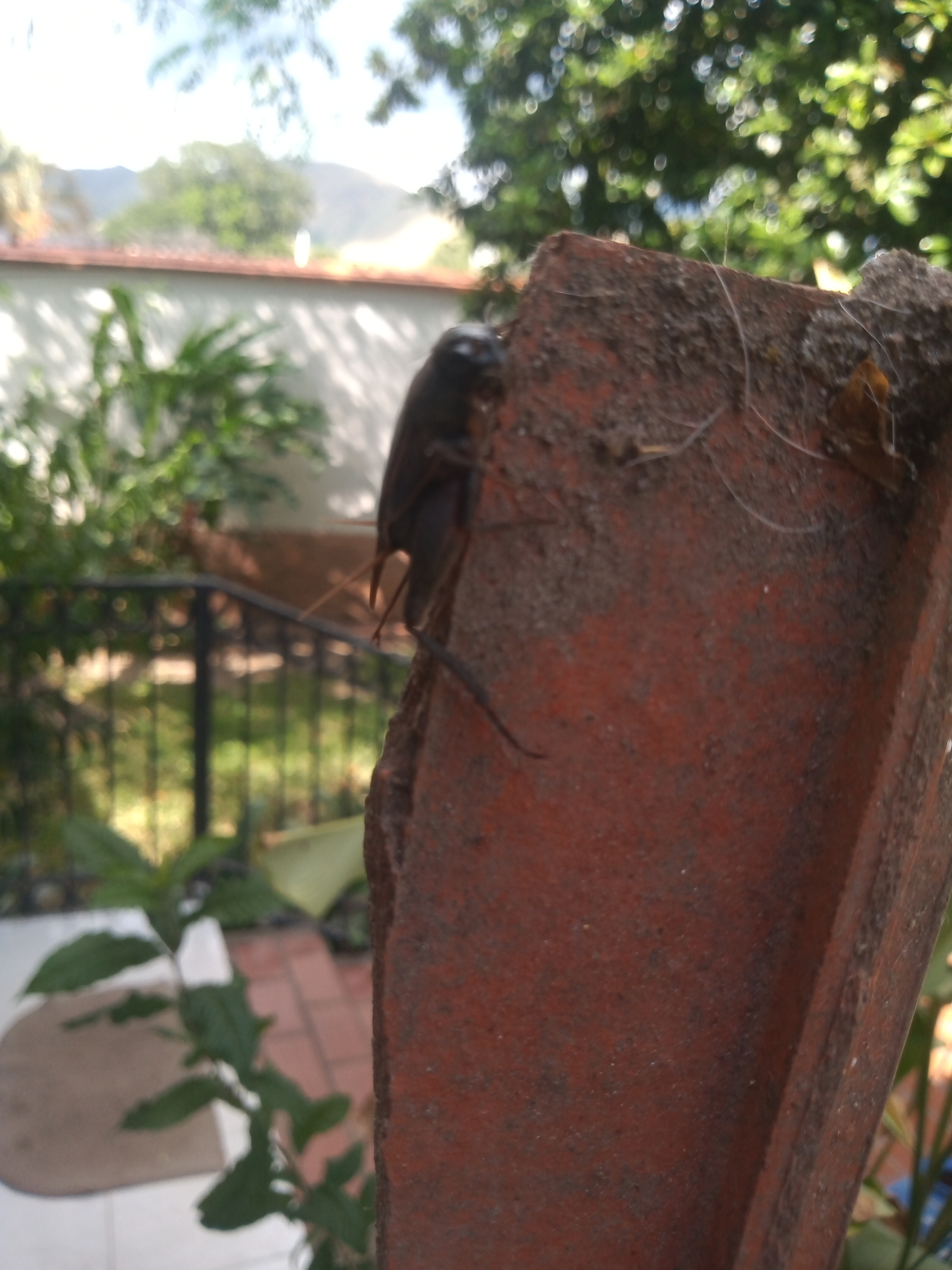
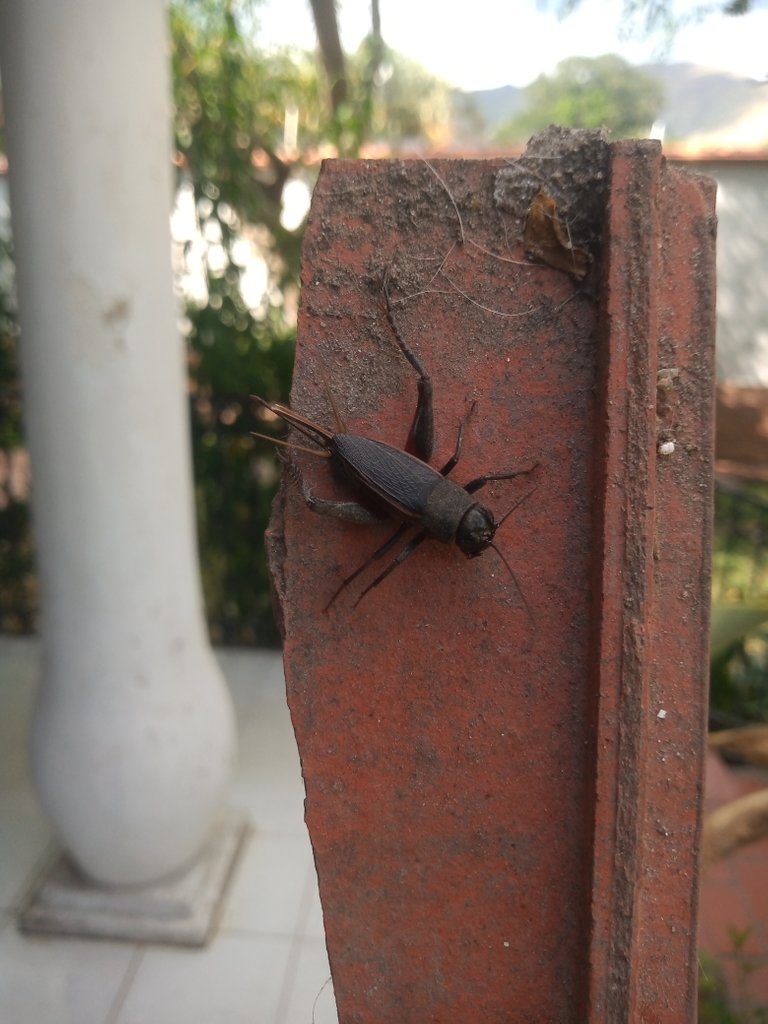
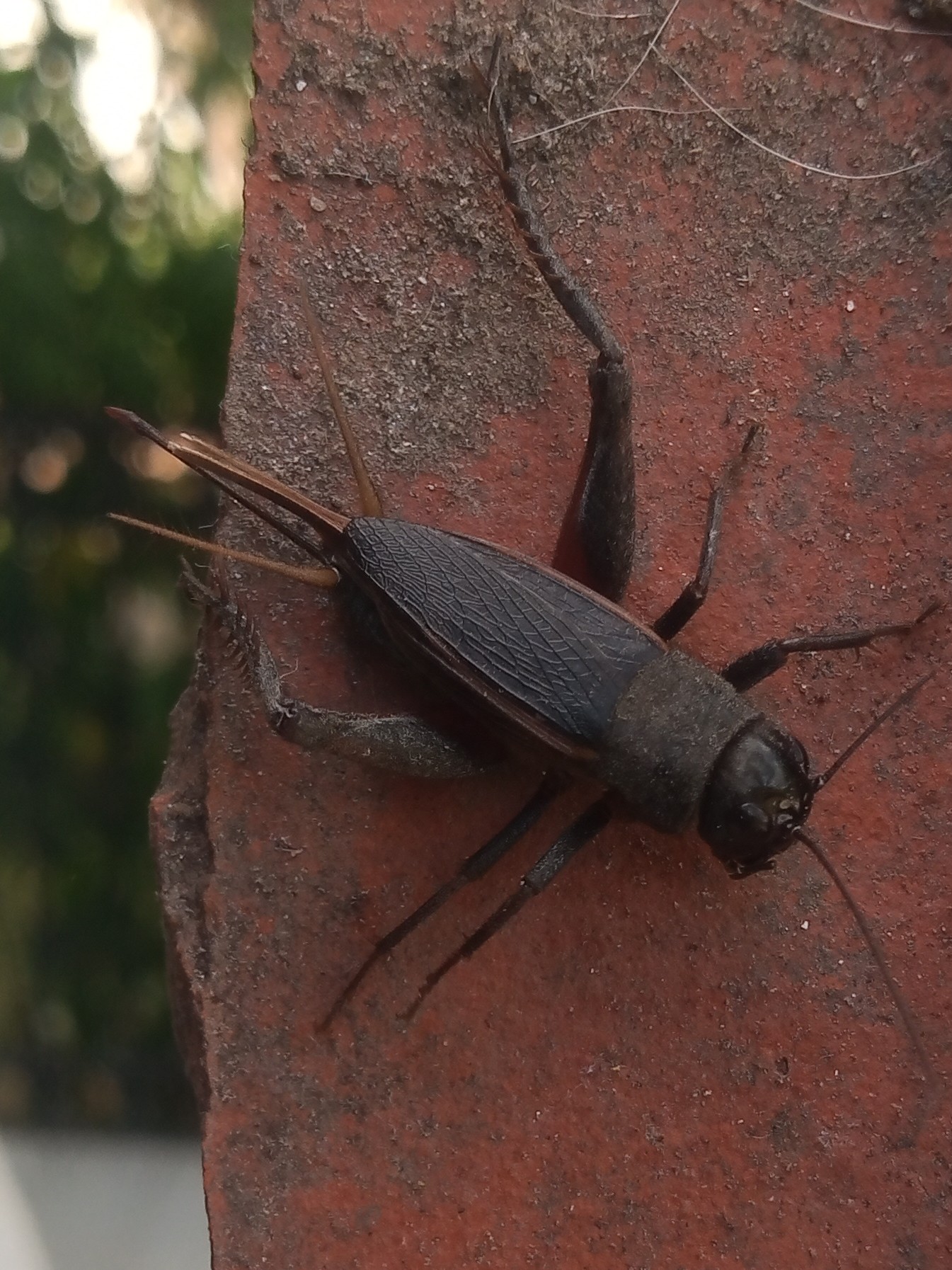
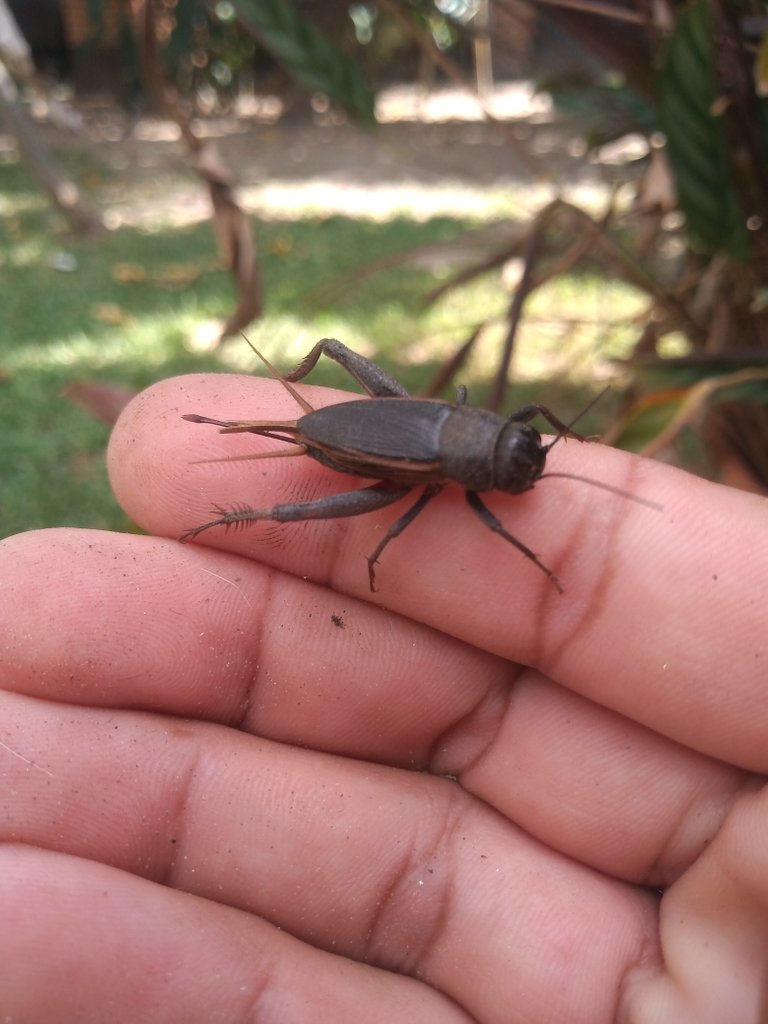
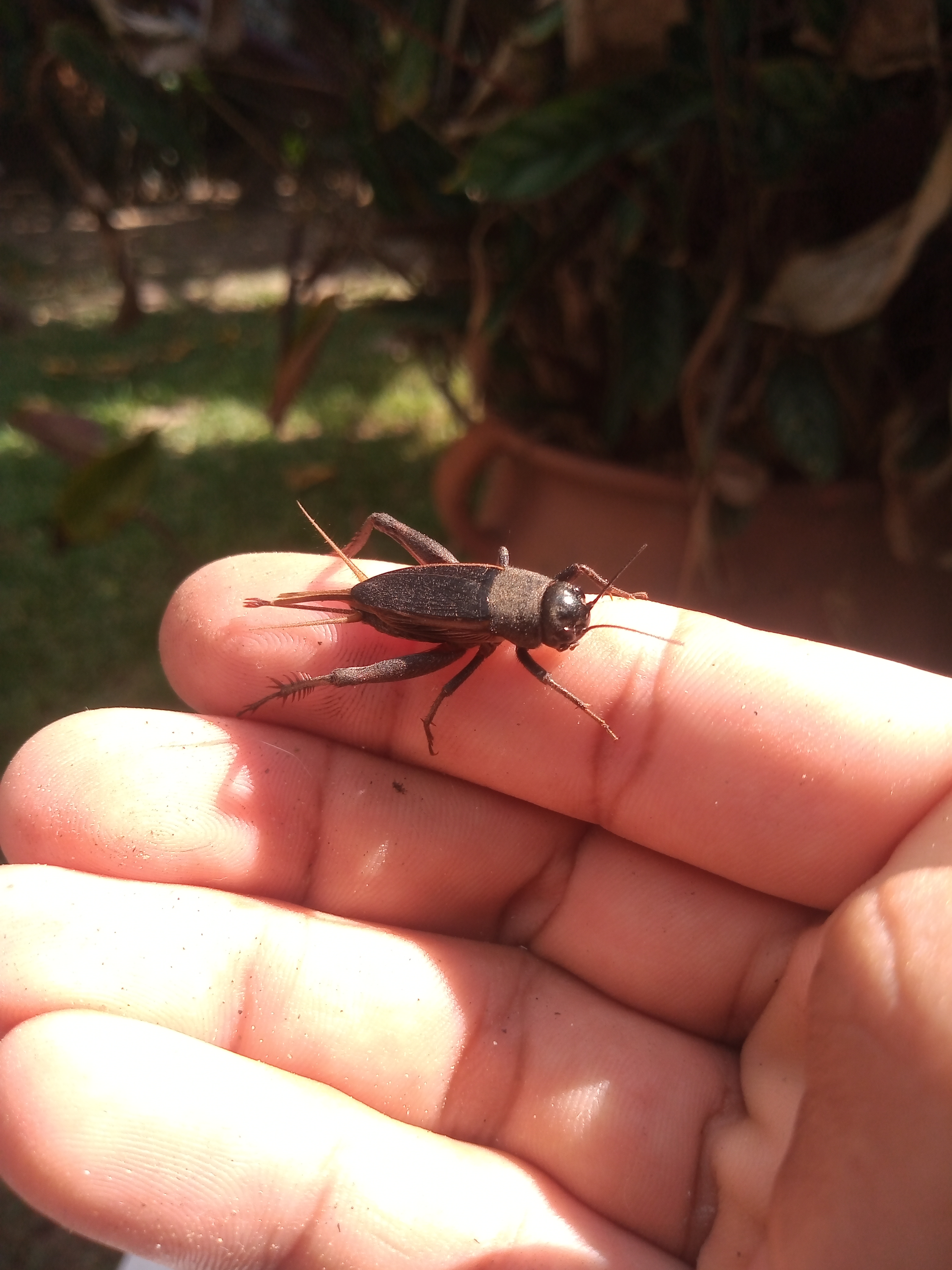
Many of these insects come to homes because at night the light generated by light bulbs are their main attraction, they always seek to be in areas such as holes or cracks, many people are bothered by the sounds generated by these insects (from 120 to 370 chirps per minute), some of these insects undergo metamorphosis and do so just as the winter season approaches. They are very active and cautious insects. Every day nature shows me amazing things so I always like to share it with all of you.
Muchos de estos insectos acuden a los hogares porque por la noche la luz generada por las bombillas son su principal atracción, siempre buscan estar en zonas como agujeros o grietas, a muchas personas les molestan los sonidos generados por estos insectos (de 120 a 370 chirridos por minuto), algunos de estos insectos sufren metamorfosis y lo hacen justo cuando se acerca la temporada de invierno. Son insectos muy activos y precavidos. Cada día la naturaleza me muestra cosas sorprendentes, por lo que siempre me gusta compartirlas con todos ustedes.
| Camera/Cámara | Motorola E6 Plus |
|---|---|
| Localitation/Localización | Aragua - Venezuela |
| Photographer/Fotógrafo | Estebandido |

